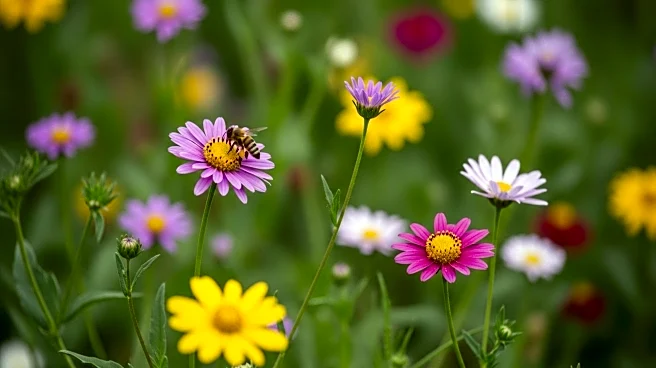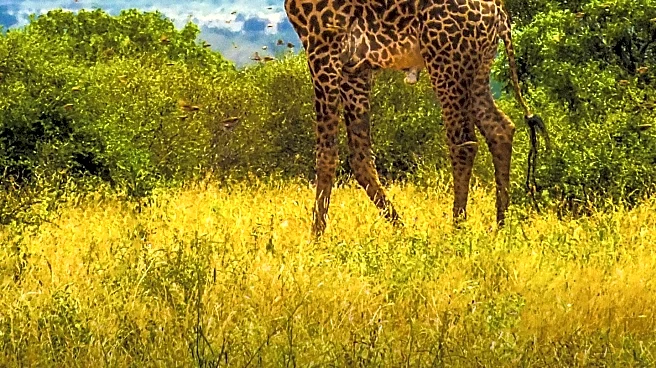What is the story about?
What's Happening?
A study led by Northwestern University and the Chicago Botanic Garden has found that wild bees strategically visit different flowers to balance their intake of protein, fat, and carbohydrates. Researchers observed eight species of wild bumblebees in the Colorado Rockies over eight years, tracking their pollen consumption and analyzing the nutrient content of the pollen. The study revealed that bees adjust their diets based on seasonal changes in pollen nutrient content, with spring flowers being protein-rich and late-summer flowers richer in fats and carbs.
Why It's Important?
The findings highlight the complexity of bees' nutritional needs and the importance of diverse plant ecosystems for their survival. As global pollinator populations face threats from habitat loss, climate change, and poor nutrition, understanding bees' dietary preferences can inform conservation efforts and garden design to support their nutritional needs. Protecting bees is crucial for maintaining food systems, as they play a key role in pollinating crops.
Beyond the Headlines
The study underscores the need for conservation efforts to focus on nutritional diversity, ensuring that mixes of plants supporting wild bumblebee species continue to exist. It also highlights the collective intelligence of bees in solving nutritional challenges, emphasizing their vulnerability and the importance of protecting their ecosystems.
AI Generated Content
Do you find this article useful?












